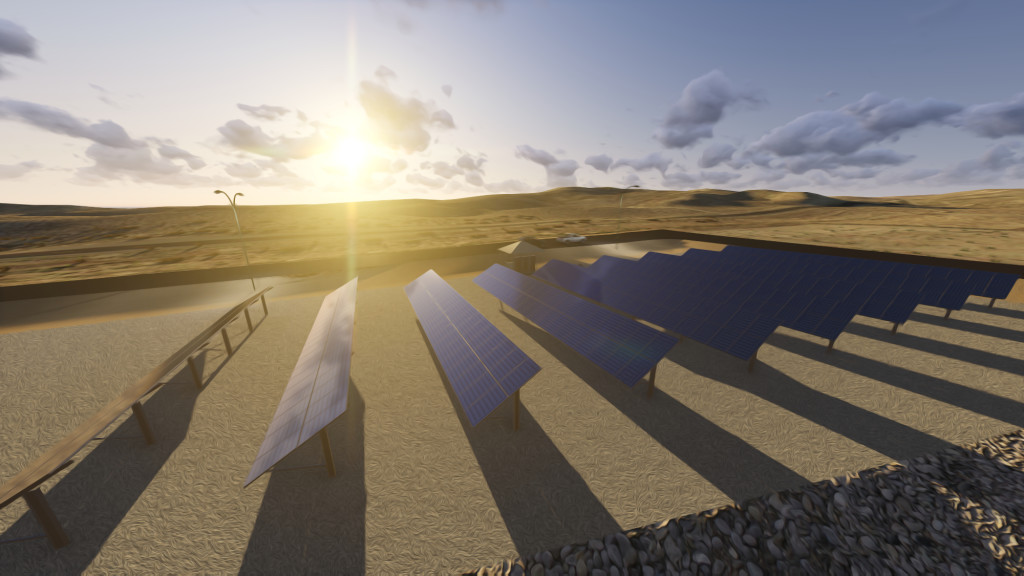UPDATED: How to do a Sun Study (Case Study)
UPDATED
The project detailed below has now become a reality! Read about the completed project here.

Solar Panels in Lincoln County Nevada.
The first sun study I did was about seven years ago while in college for a group project. It was very crude, using an early version of Sketchup, and I used screen captures in Powerpoint to give the effect of movement. We were proposing solar panels on a house and wanted to make sure the trees in the yard didn’t cast shadows.
Looking back, that sun study was probably grounded more in something to look at rather than actual fact and data. I don’t think I put much thought into the detail of the trees and I’m not sure if it was even geolocated right.
Now, with more experience and better software, I feel more prepared to share the correct way to do a solar study. I just finished just such a project for a local power district and will be showing images and video from this project.
What is a Sun Study?
If you need to know where shadows will fall for a proposed project, you need to set up a sun study. Solar projects are probably the most popular use case for this type of simulation as only a sliver of a shadow can almost completely render the array inneffective (depending on the way it is set up). Solar studies can also be used for high rise buildings to determine what areas of the city will be in the newly cast shadow or for gardens/trees to ensure that there is enough daylight for adequate growth.
How do you Create a Sun Study?
Note: There are a variety of software programs that will allow you to do a sun study. I’ve personally used Sketchup, InfraWorks and Lumion but I’m guessing that you can do it with 3ds Max and others. I’m not going to go over the details of each software program but rather show the methodology. This project was created using Sketchup for the modeling and Lumion for the simulation.
The first step of any project is to build it in 3D first. Hopefully you have CAD or other design documents to work from so that the model can be as accurate as possible. While many visualizations don’t require a high level of accuracy, a sun study is first and foremost a simulation and inaccurate modeling will introduce error into the study.
When you have the project modeled, you need to make sure it is geolocated in the correct position. Sometimes this is done before the modeling, depending on the software you are using. If your data/aerial imagery is geolocated then you probably need to make sure the project site is gelocated properly before you even start modeling.
If you project is modeled as accurately as possible, and geolocated, you are ready for your sun study. Other visualization elements such as texturing are nice, but not necessary as you are just looking for the hard edges of the shadows.
There are no exact rules for a sun study but you want to, at minimum, do a few things. The first is to simulate the winter and summer solstices (December 21st and June 21st, respectively) as they are the shortest and longest days of the year and will give you your extreme conditions.
Unless you want to simulate an entire year of shadows (you don’t), you will probably make two types of simulations: days and years. The winter and summer solstices are day simulations. If you were to simulate 7am at every day of the year, on the other hand, it would be a year simulation.
This is a probably a good time to point out that you need to be flexible. If you are doing a sun study in Alaska, for example, you will have to adjust your hours to correspond with the long summer days and the super short winter days. If not you will end up with a lot of unnecessary night renderings. Find out when the sun comes up and goes down in the area you are simulating and use those times as a rough baseline as far as you start and stop times.
While simulating every hour of an entire year would be the most comprehensive method of a sun study (again, you don’t want to) the most comprehensive way that would be more reasonable would be to simulate every hour the sun is up during the year (7am for the entire year, 8am for the entire year… and so on) and then a full day simulation on the 21st of each month (just to make it nice and neat with the solstices). This would be roughly 25 simulations depending on the location you are working in and would give more than enough information on how your project will affect shading in the area.
For the Panaca Solar Project, we only performed 4 simulations as we were only most interested in the extremes. We also ran the test two times to test different spacing which is a common and helpful method of using a sun study. Also note that we included daylight savings time (you will see the shadows jump) so that the time would be accurate. You can see the results below:
As part of the contract and since we had already modeled the project we also created a project overview that they can use in the public outreach of the project. That you can see below:
Have you created a sun study and/or what did I miss? Let us know in the comments!




